First cohort of game design students on Northeastern’s Oakland campus teams up with children to make video games
A unique partnership between professor Cliff Lee’s graduate students and the Mills College Children’s School put a gamified spin on Northeastern’s experiential education. “This is experiential learning in all the best ways.”
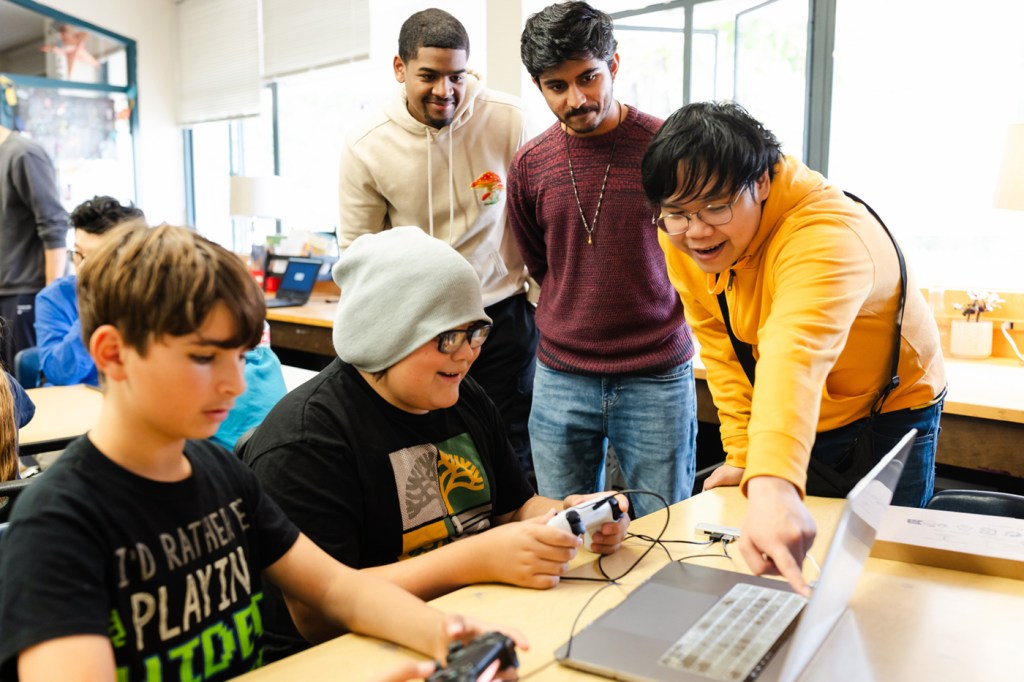
Two eye-patched pirates swing their curved blades at a monster, but it refuses to die.
In a moment of panic, they look at each other and in a split second they realize something: In order to defeat their foe they must work together. They return to the fight with blades slashing in sync, but just before they strike down the monster another one appears and fells them both.
Game over. Literally.
This is “Captain Crimson’s Journey,” a cooperative 2D side-scrolling video game that has players teaming up as pirates to swashbuckle and slay enemies to reach the end of each level. One of two games designed by graduate students in Northeastern University’s game science and design program, the game is the result of a semester’s worth of work.
But the eight graduate students in art and design professor Cliff Lee’s game design and analysis course, which was offered on Northeastern’s Oakland campus for the first time this fall, weren’t the only fledgling game developers who helped create these games. Through a collaboration with Mills College Children’s School at Northeastern, they were joined by fourth and fifth grade students. The children’s school is a private school serving children from age 2 to 10 that operates on the Oakland campus.
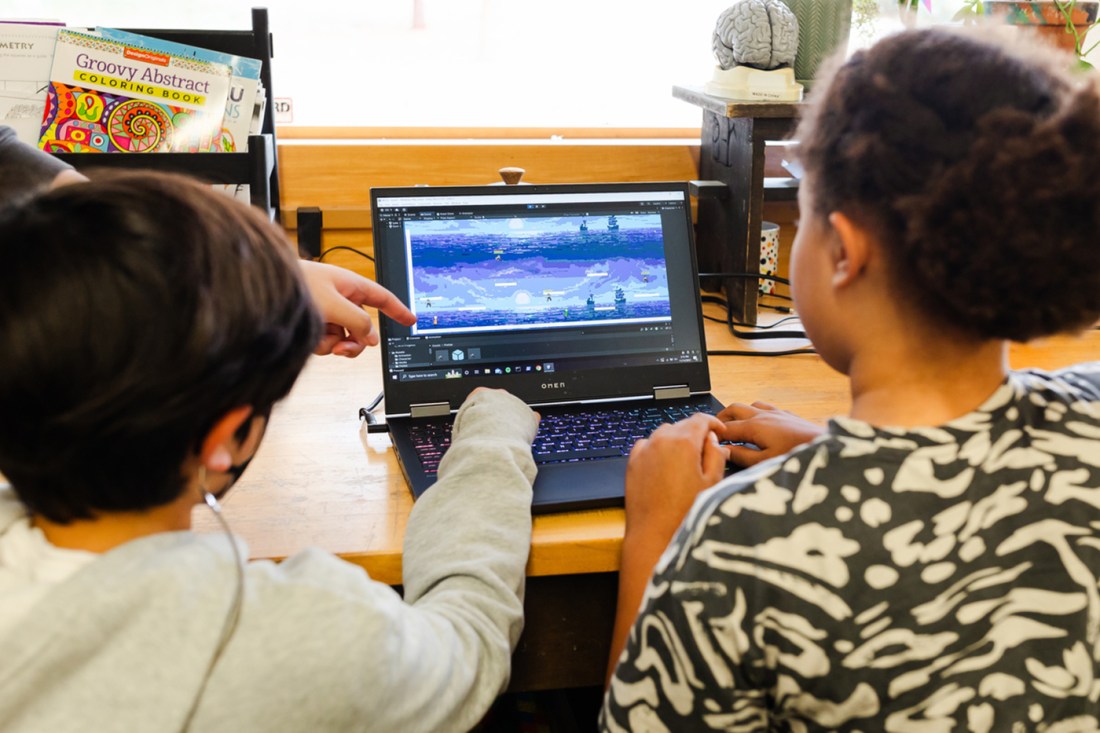
With the course being so focused on player-centered design, an iterative approach that involves using playtesting to get real feedback from players, Lee had an idea for how to adapt the pre-existing course for the Oakland campus. Lee ended up working with Lyndsay Schaeffer, head teacher for fourth and fifth grade at the children’s school, to give his students some firsthand experience with the playtesting process and how it can impact game development.
“They really are utilizing what they are learning in our books and videos in class and really practicing it with real players, not this hypothetical audience,” Lee says.
The class started off with both groups of students playing tabletop games and, later, video games, just to break the ice. As they played together, they learned more about one another. Lee’s students took notes and reflected on how Schaeffer’s students played games. From there, they divided into two teams of four to brainstorm and create their game prototypes.
While one group created the cooperative “Captain Crimson’s Journey,” the other made “Project Tomorrow.” A split screen multiplayer game that takes place on an alien planet, “Project Tomorrow” tasks players with competing against each other to be the first to collect enough mechanical parts to assemble a spaceship and escape.
The centerpiece of the class was a set of playtesting sessions where Lee’s students could put their prototypes in the hands of Schaeffer’s class. By seeing what did –– and didn’t –– work, and reflecting on the process, they could then improve their games.
In the prototype stage, pairs of young students would get to play each prototype, while talking with and being observed by Lee’s students. After playing, each pair then sits down for focus group interviews with some of Lee’s students to reflect on what they played.
Meanwhile, Lee’s students had lists of questions that they asked Schaeffer’s students and captured video footage of the testers playing so they could later see what parts of the game testers are struggling with or what mechanics might need fine tuning.
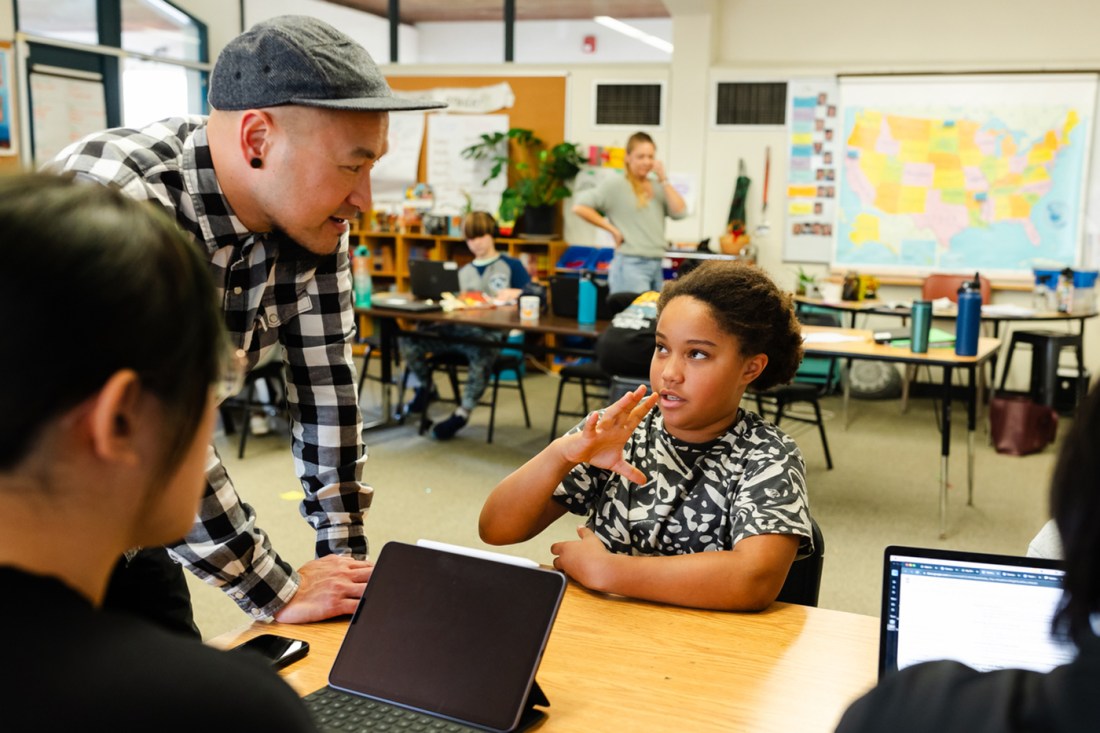
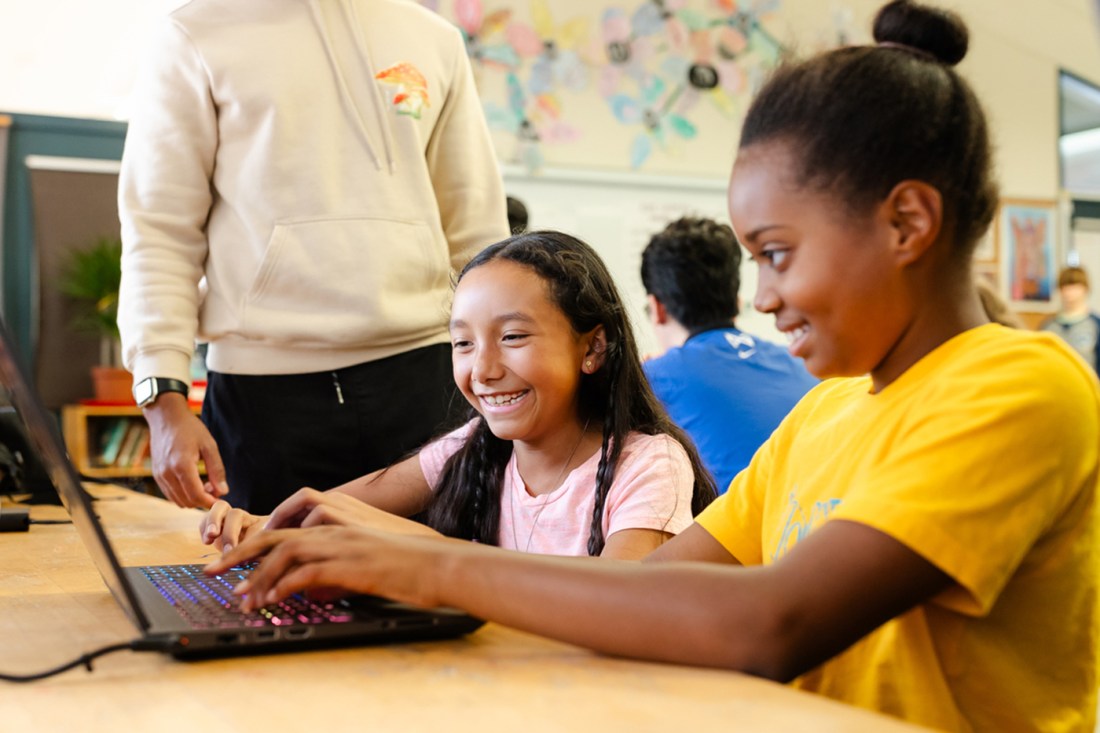
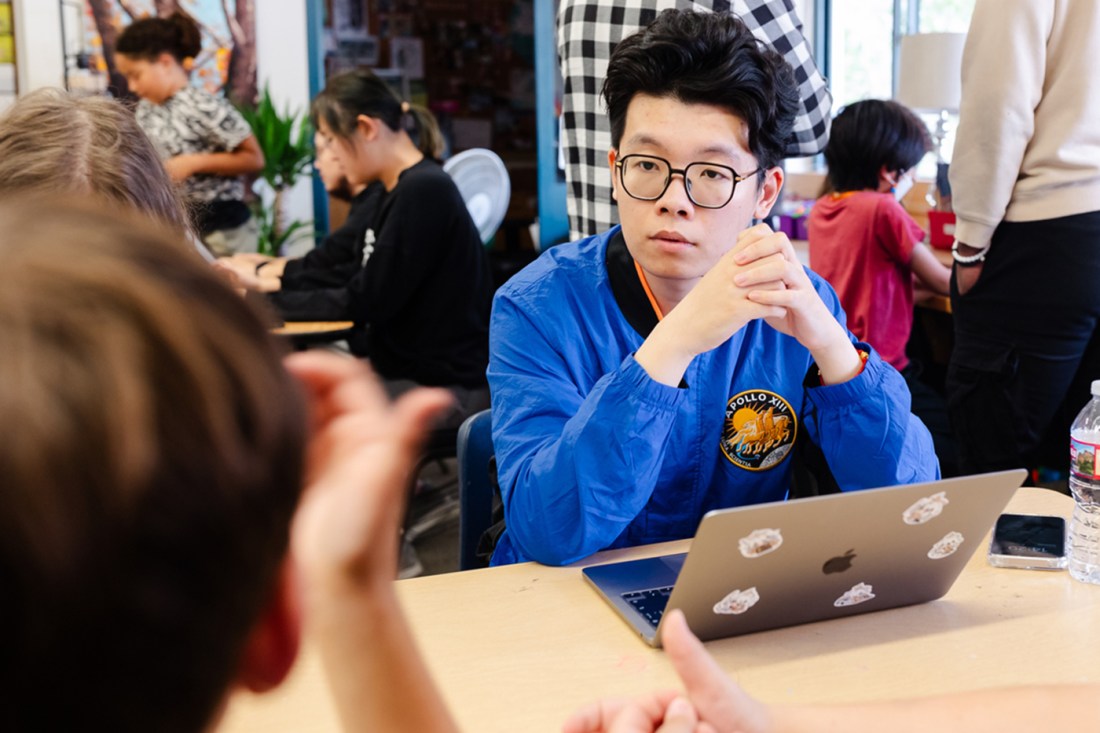
The feedback that came out of these sessions was invaluable –– and surprising.
“One thing that I experienced is they’re the generation that doesn’t know how to play with a keyboard and mouse,” says Yusi Cheng, a graduate game science and design student who worked on “Captain Crimsons’ Journey.” “The game was initially designed as a dual-player co-op game to play on a PC with keyboard controls. … Based on the feedback we got, we needed to switch to controllers.”
Cheng and his teammates also received a lot of feedback about the art style of their game, which ended up shifting from a pixel art style to something more cartoonish that is now in the current prototype. In another case, watching students mash the buttons so much that they made the prototype glitch gave his team insight into how players at this age actually interact with games.
Featured Posts
“They are part of the development team, to be honest,” Cheng says. “They are the ones that gave us the feedback on what works and what doesn’t, so we can start developing ‘this is the direction we want to go in and this is not.’”
Lee’s students weren’t the only ones to benefit from the collaboration. Schaeffer says her students gained a lot from the process, too.
“It’s pretty awesome to see them have this agency,” Schaeffer adds, noting that her students have come to her saying, “‘They’re not just taking notes on me, they’re actually listening to what I have to say and doing something with it to make their idea better.’
“That’s a really empowering place for a child to be in,” she says.
Developmentally, students in this age group are “really uncomfortable letting go of an idea,” Schaeffer says. By watching adults go through an iterative creative process, her students could see that not always having the answers and accepting other people’s feedback are just parts of the process.
Lee is hopeful this won’t be the last time his class partners with the children’s school. The games and students that came out of his class were better for having worked with this group of young game developers.
“It’s one thing to read or watch a video on it, but to see it and have to make changes and adapt is just a whole different level of learning,” Lee says. “It fits with Northeastern’s pillar of experiential learning. This is experiential learning in all the best ways.”










